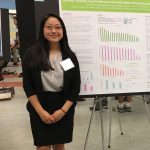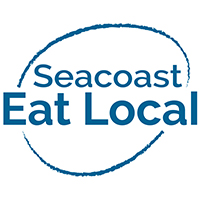The Results are In! A Summary of My Older Adult Project
 Throughout my internship with Seacoast Eat Local, I have been working on a research project involving the local older adult population. The aim of this study was to find out a variety of things including (1) how much they knew about Seacoast Eat Local (2) the best methods to reach them with information and (3) their farmers’ market food preferences. The part I was most excited about was their food preferences. Currently, many older adults do not consume enough fresh fruits and vegetables (FFVs). Therefore, by discovering their preferences, Seacoast Eat Local as well as other organizations could gain insight into how to better serve this portion of our population. Additionally, SEL has a mobile market (SAMM) that provides FFVs to areas that do not necessarily have immediate access to them. The findings from this study could also influence the types of foods provided in the SAMM van.
Throughout my internship with Seacoast Eat Local, I have been working on a research project involving the local older adult population. The aim of this study was to find out a variety of things including (1) how much they knew about Seacoast Eat Local (2) the best methods to reach them with information and (3) their farmers’ market food preferences. The part I was most excited about was their food preferences. Currently, many older adults do not consume enough fresh fruits and vegetables (FFVs). Therefore, by discovering their preferences, Seacoast Eat Local as well as other organizations could gain insight into how to better serve this portion of our population. Additionally, SEL has a mobile market (SAMM) that provides FFVs to areas that do not necessarily have immediate access to them. The findings from this study could also influence the types of foods provided in the SAMM van.
25 individuals participated in this study, a majority of them ages 81 – 95 and female. This research was done via paper survey. The only qualification was that they needed to be 60+ years old. The data was collected from both an assisted living facility as well as a senior housing authority site.
After analyzing the data, it was found that SEL was more well known at the location where the SAMM van stopped, which makes sense. That is also why this research is so important because it identified locations the SAMM van could add to its route. It also found that mail was the most popular method of communication for the local older adult population. Furthermore, the survey asked some questions about how older adults preferred to buy food at the farmers’ market. The results indicated two things: that older adults like to have autonomy when choosing their fruits and vegetables as well as the fact that they like to purchase smaller amounts of larger foods (i.e. ½ a melon as opposed to a whole one). This makes sense because older adults do not usually consume as much food and do not need as many daily calories. Buying in smaller portions also prevents food waste and spoilage.
Now comes the exciting part! The food preferences of the local older adult population. Foods on the survey were limited to those available at the farmers’ markets and were categorized into four categories: vegetables, fruits, dairy, and protein. Here were the top three from each category: The percentages indicate the percent of individuals that selected for the food.
Top Vegetables: Corn (84%), Potatoes (80%), and Green Beans (72%)
Top Fruits: Peaches (72%), Strawberries (72%), and Watermelon (68%)
Top Protein: Eggs (72%), Chicken (68%), and Beef (60%)
Top Dairy: Cheese (68%), Milk (52%), and Yogurt (48%)
It was interesting to find that eggs were the most liked protein product. Fish was also an extremely popular protein and came in 4th place. The least popular food of all was eggplant surprisingly. When talking with some survey takers, they indicated significant interest in having the SAMM van stop at their location! This is great because it shows that the older adult population wants these FFVs, it is just a matter of access. I’m so glad I got to have this experience. I had a blast learning how to conduct research, meeting all the participants, and presenting my results at the UNH Undergraduate Research Conference! Hope you found these results as interesting as I did!
Till Next Time,
Chloe
